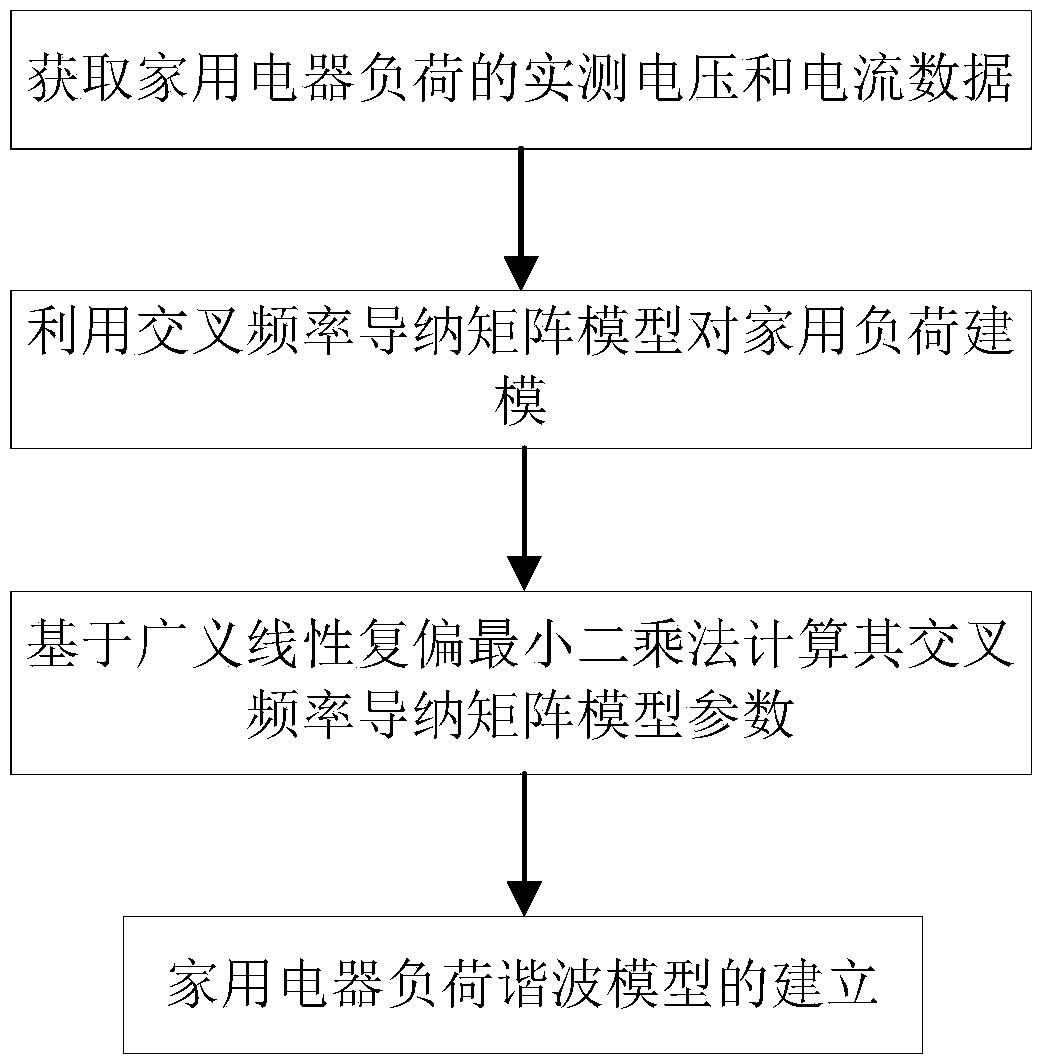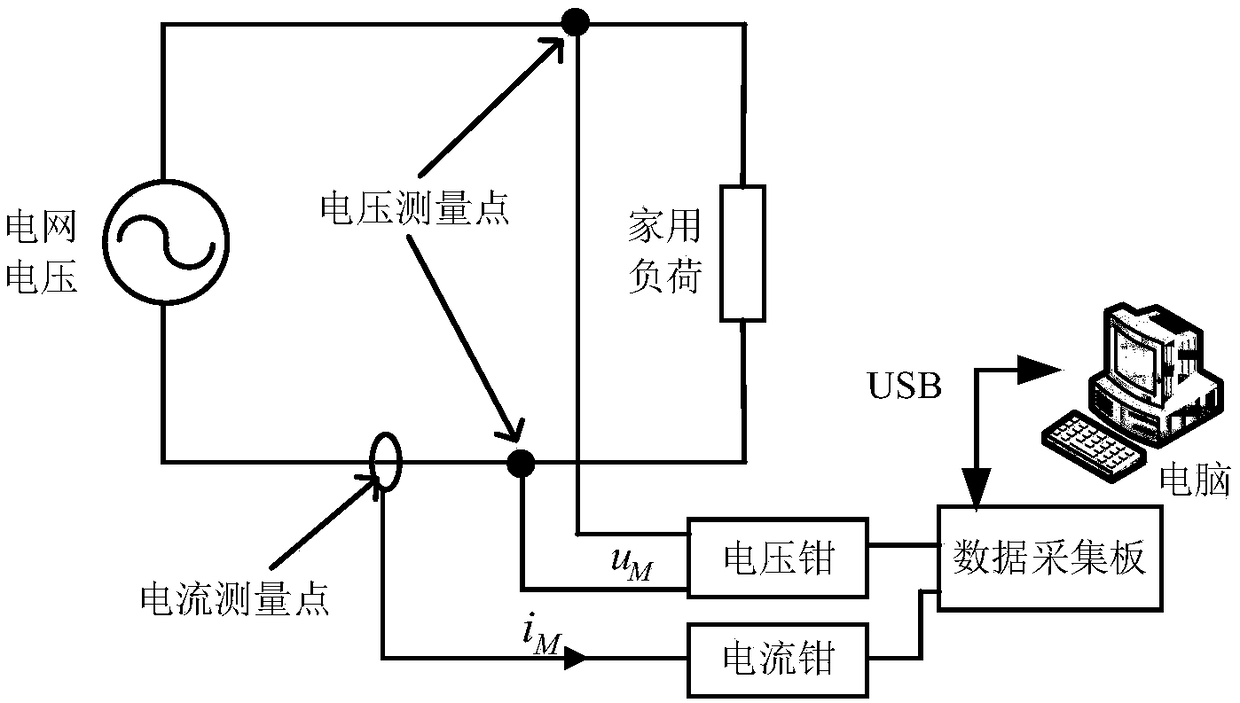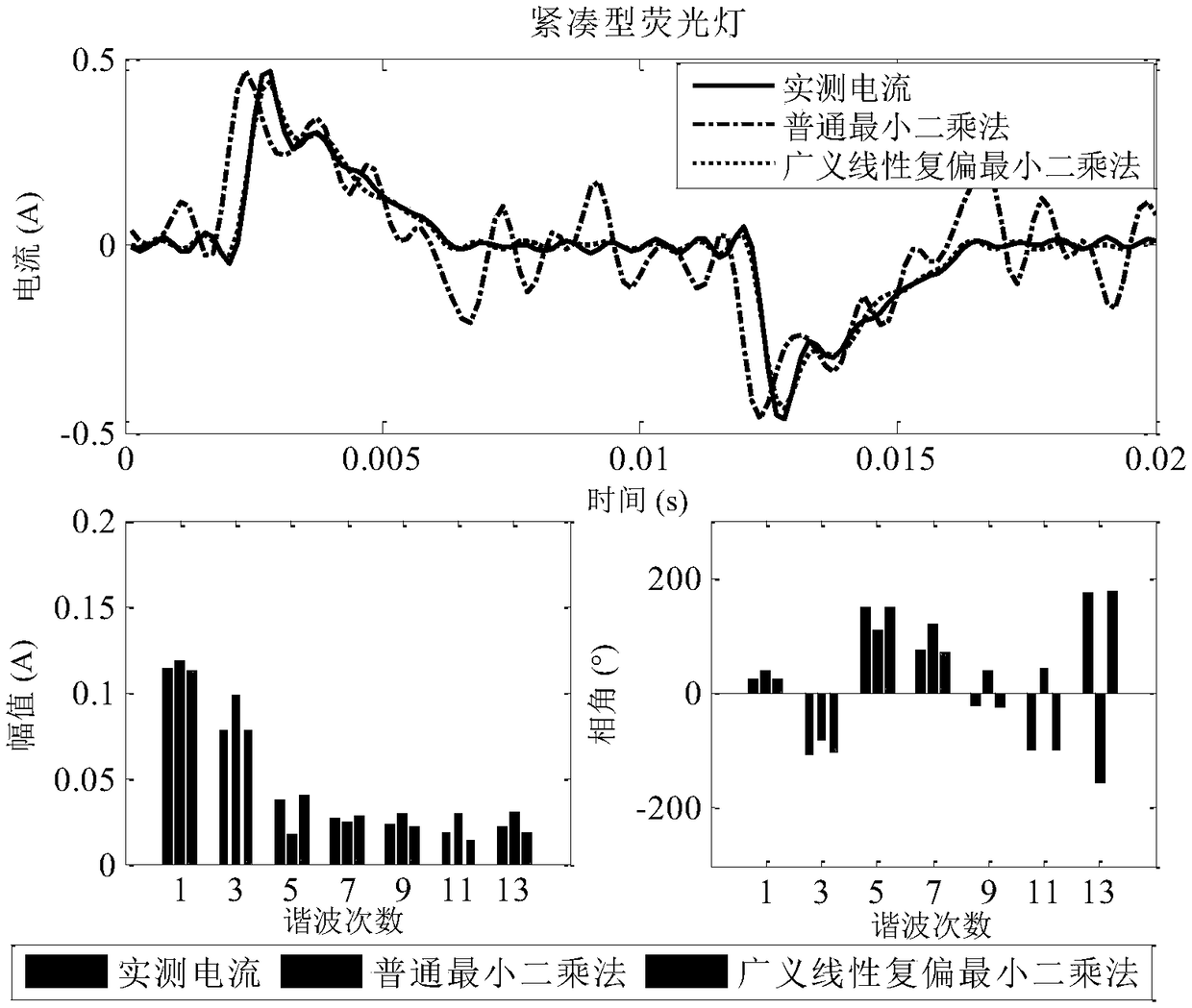A method for establishing harmonic model of household electrical appliance load based on measured data
A technology for household appliances and measured data, applied in special data processing applications, electrical digital data processing, instruments, etc., can solve problems such as matrix ill-conditioning, errors, and affecting modeling accuracy, and achieve the effect of a fast method
- Summary
- Abstract
- Description
- Claims
- Application Information
AI Technical Summary
Problems solved by technology
Method used
Image
Examples
Embodiment 1
[0052] A method for establishing a household appliance load harmonic model based on measured data disclosed in one or more embodiments, the specific process is as follows:
[0053] 1. Establish an experimental measurement platform to obtain the measured voltage and current data of household appliance loads.
[0054] Such as figure 2 As shown, an experimental measurement platform is established. In order to consider the influence of the voltage in the actual power grid on the load of household appliances, the power supply voltage of the household load is the actual power grid voltage, and the power supply voltage u is measured by voltage clamp and current clamp M and the actual current i M , combined with the data acquisition board and data acquisition software LABVIEW to obtain the actual voltage and current data, and then perform Fourier analysis on the collected data to obtain the voltage phasor value and current phasor value.
[0055] 2. Establish the cross-frequency adm...
PUM
 Login to View More
Login to View More Abstract
Description
Claims
Application Information
 Login to View More
Login to View More - R&D
- Intellectual Property
- Life Sciences
- Materials
- Tech Scout
- Unparalleled Data Quality
- Higher Quality Content
- 60% Fewer Hallucinations
Browse by: Latest US Patents, China's latest patents, Technical Efficacy Thesaurus, Application Domain, Technology Topic, Popular Technical Reports.
© 2025 PatSnap. All rights reserved.Legal|Privacy policy|Modern Slavery Act Transparency Statement|Sitemap|About US| Contact US: help@patsnap.com



